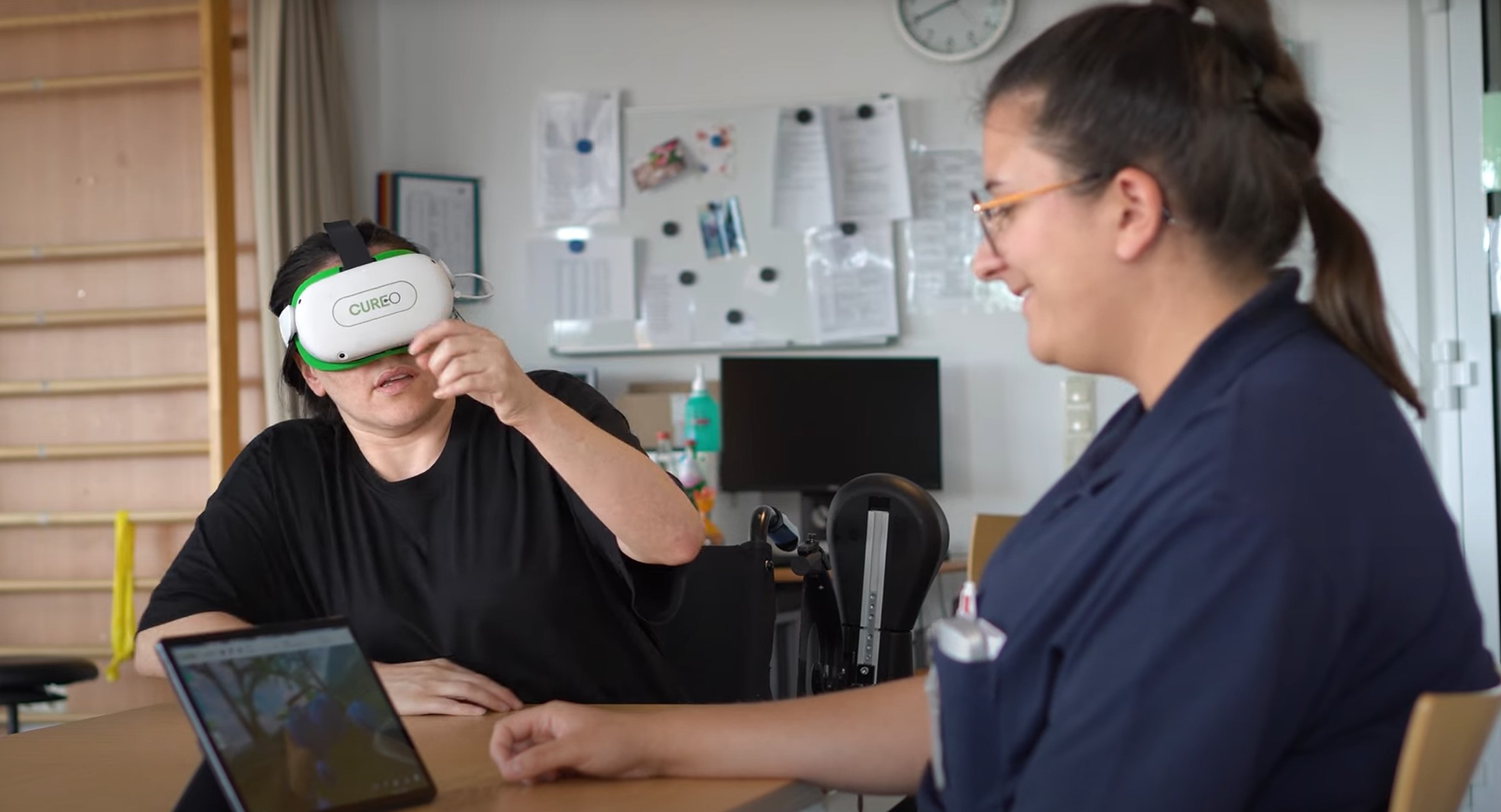How can people be given new hope during one of the most difficult phases of their lives? This question concerns many professionals in medical rehabilitation. Virtual reality offers a promising approach in this regard. The technology not only supports functional progress but also promotes emotional well-being.
For patient Elif, therapy with CUREO was not just a training program, but a new perspective.
In 2023, at just 39 years old, Elif suffered a cerebral hemorrhage. The consequences were severe. Her left side was significantly impaired. Returning to a self-determined everyday life required patience, determination, and support. A central element of her rehabilitation journey was training with the virtual reality system CUREO.
“I really enjoyed the therapy,” Elif recalls. “CUREO motivated me to push myself further. During that difficult time, it was a real ray of light. I look forward to every session.”
CUREO provided her with a safe and engaging environment where she felt actively challenged in a positive way. The playful exercises sparked ambition and boosted her self-confidence. Especially during mentally challenging phases, this kind of positive stimulation is particularly important.
You can watch the full video about Elif’s experience with CUREO at the following link: https://www.youtube.com/watch?v=wmeccWvY7T8&t=126s

Patient motivation is a key factor in the success of rehabilitation. When therapy is enjoyable and individual progress is visible, the willingness to participate regularly increases. This is also confirmed by the results of an acceptance study conducted with CUREO.[1]
95% of patients are enthusiastic about the CUREO therapy
97% would repeat the therapy
94.5% report increased motivation and willingness to participate in therapy
Side effects? Only 4.5% of participants reported minor issues
In addition to high levels of acceptance, studies also demonstrate clear therapeutic benefits. In a clinical study involving stroke patients, 84 percent of participants achieved clinically relevant improvements with CUREO therapy.
AARAT scores, a recognized measure for upper limb function, increased significantly more than with conventional therapy without virtual reality components. This highlights the powerful combination of targeted movement therapy, emotional activation, and motivational engagement.
The German Stroke Foundation also recognizes virtual reality as an important advancement in neurorehabilitation. At the 2024 Congress of the German Society for Neurorehabilitation, it was emphasized that VR-supported arm and hand training can lead to significantly better motor progress. You can read the full article here.
Improved Well-Being in Palliative Care
CUREO has also proven its effectiveness in palliative care. A recent study by Charité examined the impact of VR therapy on subjective well-being and various distressing symptoms.
The results are promising. Patients reported a significant improvement in overall well-being, along with reductions in sadness, pain, fatigue, anxiety, and shortness of breath. Especially in sensitive phases of care, such as palliative treatment, this represents a valuable contribution to quality of life.
Virtual reality–based therapies such as CUREO offer more than just a modern training device. They create experiences that motivate, activate, and emotionally empower patients. The combination of targeted physical activation and playful design helps to overcome fear, rebuild confidence, and rediscover joy in everyday life.
Elif’s story is a powerful example of how crucial the psychological dimension is in rehabilitation. CUREO opens up new pathways, for both body and mind.
The information presented in this article is based on current scientific research and practical experience with the CUREO system as part of medically prescribed rehabilitation programs. Individual therapy results and effects cannot be guaranteed. This article does not replace personalized consultation by qualified medical and therapeutic professionals.